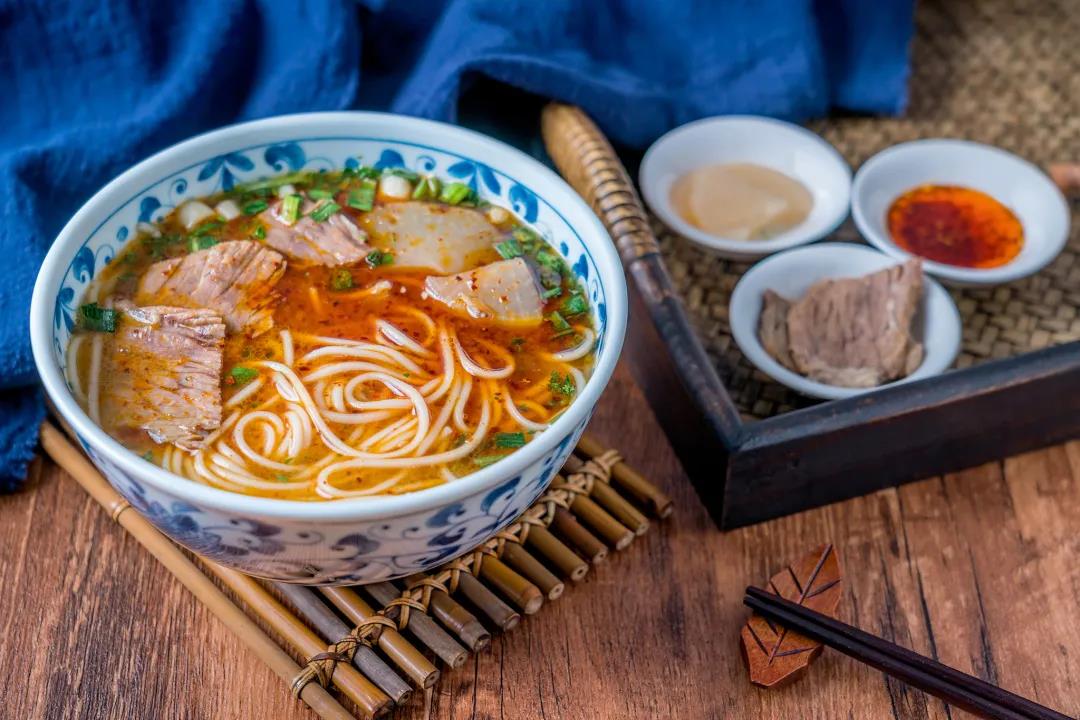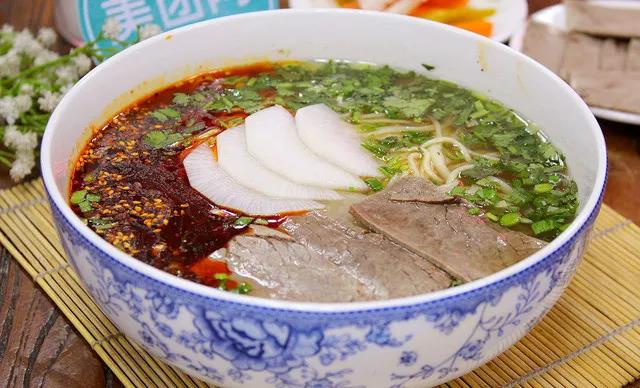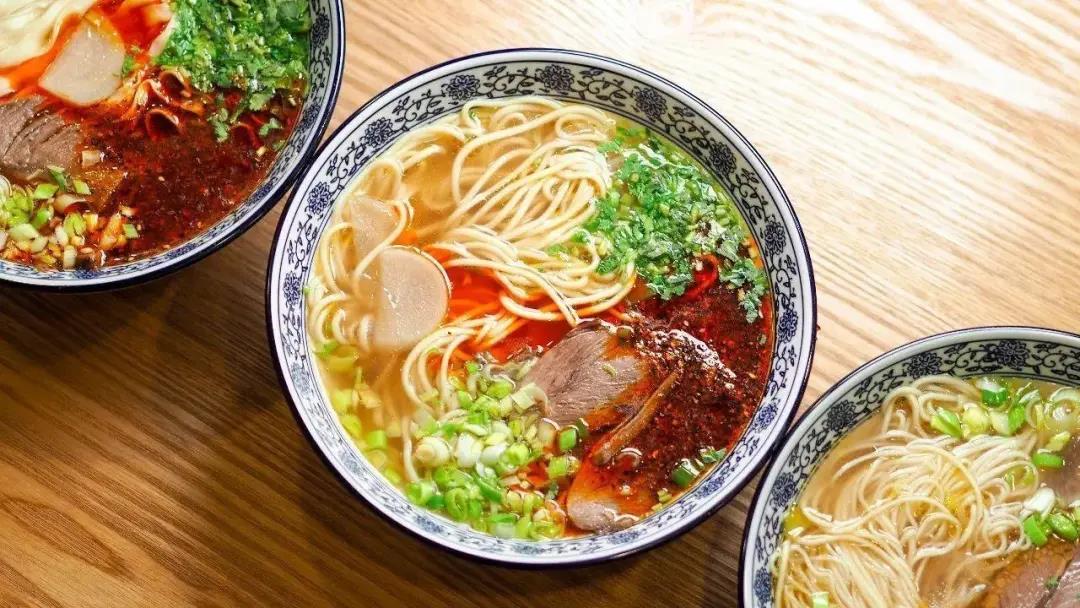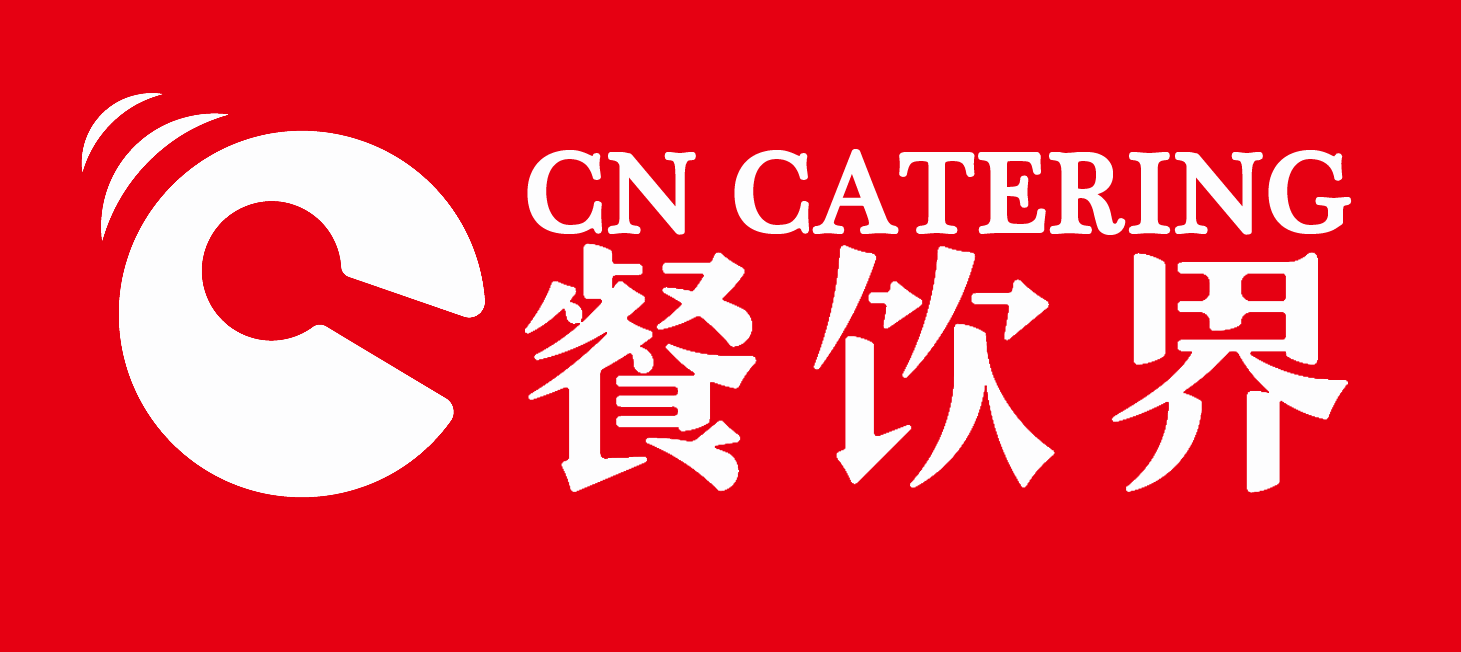What is the difference between "Lanzhou Ramen" and "Lanzhou Beef Noodle" that detonated capital?Today's headlines

At the moment when investment in the consumer track continues to be hot, "Lanzhou Beef Noodles" has also become a capitalist. In half of 2021, three Lanzhou ramen projects have received financing: Ma Jiyong, Chen Xianggui and Zhang Lala. The recent incident has also caused a lot of discussion on the Internet.
Someone said, "In the eyes of Lanzhou people, every authentic beef ramen can't be authentic. No noodle restaurant will have the word "pulled" on its sign.
So what is the difference between "Lanzhou Ramen" and "Lanzhou Beef Noodles" that have recently become the head of the capital?
one
Lanzhou's "Ramen"-Lanzhou Beef Noodles
According to statistics, nearly 900 noodle restaurants in Lanzhou City, Gansu Province, each sell more than 800 bowls of noodles every day. According to this calculation, of the 2.5 million residents in Lanzhou City, one out of every four people eats a bowl of noodles every day. This bowl of noodles is Lanzhou beef noodles.
However, when a foreigner who travels to Lanzhou on a business trip or travels to Lanzhou deliberately looks for "Lanzhou Ramen" on the street, they find that there is only "beef noodles" in the local area, and the ramen tasted here is exceptionally good. They often say "I have eaten so much." The Lanzhou ramen is still the most authentic one in Lanzhou."

In fact, there is neither "Lanzhou" nor "pull" on the signboard of the Lanzhou noodle restaurant. The name "Lanzhou Ramen" is just the name of a foreigner. In Lanzhou, it is called "beef noodle".
The birth and inheritance of a delicacy is often closely related to the natural environment in which it is located. Lanzhou, located at the junction of the Loess Plateau and the Qinghai-Tibet Plateau, is a gathering area of agricultural civilization and nomadic civilization. High-quality wheat and fat cattle and sheep make beef noodles.
However, when talking about the origin of Lanzhou Beef Noodles, we have to talk about it from Henan, a thousand miles away.
According to official records, Lanzhou beef noodles were learned by Ma Liuqi of Dongxiang nationality during the Jiaqing period of the Qing Dynasty from Chen Weijing, a native of Qinghua in Huaiqing Prefecture, and brought into Lanzhou. The "Huaiqing Mansion" in the Ming and Qing Dynasties was an administrative region, governing "Hanoi County", which is today's Qinyang City, Henan Province.
According to the book "Henan Characteristic Food Culture", Chen Weijing was a student of the Imperial College in the Jiaqing period of the Qing Dynasty. He taught the cooking skills of beef noodle soup in his hometown to his classmate Ma Liuqi. Since then, Lanzhou has the embryonic form of beef noodles. , "Majia Uncle Beef Noodle" founded by Ma Liuqi has become one of the most representative brands of Lanzhou beef noodles. The Qing Dynasty academic master Zhang Shu once praised "Master Ma's Beef Noodles":
Ramen is fragrant, only Ma Jiaye.
Delicacy is hard to come by, looking back at hometown far away.
At sunrise, recite the scriptures, and at dusk, the white tower is empty.
Burning incense sighed, only hoping for beef noodles.
It is said that Chen Weijing constantly explored the blending of spices, and the descendants of the Chen family have also constantly discussed cooking skills with the masters, but it is undoubtedly the "Master Ma" who really carry forward the beef noodles. There is a joke that Lanzhou beef noodles have the last name "Ma" but not "Niu". Firstly, "Ma" is the most common surname among the local ethnic minorities. Secondly, there are ten owners of beef noodle restaurants and nine of them have the last name "Ma". This cannot fail to mention one of the great chefs named Ma Baozi, who made Lanzhou beef noodles an important symbol of Northwestern dining.
In the 1940s, a mysterious figure with a big beard walked straight into a small restaurant in Lanzhou City and ordered a bowl of noodles. After eating, he was full of praise. Later, people learned that this mysterious figure was originally an educator and calligrapher Yu Youren. He tasted the Lanzhou specialty beef noodle soup, and the one who made the soup for him was Master Ma Baozi.
Today's beef noodles have become the taste bud memory of Lanzhou people. Insiders estimate that there are about 3,700 beef noodle restaurants of various sizes in the entire Lanzhou area. If a noodle restaurant employs 5 to 10 people, tens of thousands of people are currently employed in beef noodle restaurants. More than 90 million yuan. Some people have counted that the number of Lanzhou beef noodle restaurants in China alone has far exceeded the total number of KFC and McDonald’s chain stores in the world.
two
A bowl of good noodles "one, two, three, four, five"
People in Lanzhou have to take a sip of soup before eating beef noodles. After swallowing this sip of soup, you will know whether the beef noodles are authentic. When talking about beef noodles, we must first say "soup" because the most important secret and the most critical technique for judging the pros and cons of beef noodles are all reflected in the mellow soup.

Generally speaking, choose fat and tender yak meat or premium yellow beef when making the soup, add beef spinal cord and beef leg bone, etc., with the proportion of herbs, pepper, dried ginger, cinnamon, fennel and other spices, and then add a certain proportion Of water. Of course, each village has its own tricks, and each family has its own secret recipe. For example, some are added with fatty chicken, some are added with beef liver, some are with butter, and some are added with chicken soup, as mentioned above, Ma Xueming's soup is added with lamb liver. Some spices are more than a dozen kinds, some are as many as 30 kinds, and some are added with edible Chinese medicine. The whole boiling process takes four or five hours.
However, this only completed the first step. The second step is to put the boiled first soup in a pottery jar to cool. When it opens the next day, take out part of the thick soup and add a certain proportion of boiling water to boil it again. At this time, the bright, clear, delicious and rich beef broth is in front of you.
But it still cannot be regarded as a complete success, because the auxiliary ingredients of beef noodles are also an important part of the soup. The most important auxiliary material is radish. Cut into long or fan-shaped slices, blanch them in a pot of boiling water, remove and immerse in cold water, then pour them into the soup and cook. This will make the radishes soft and hard and you can remove them. The peculiar smell of radish.
After talking about the soup, it's time for the noodles to appear. Don't look at the ramen master who can turn a ball of noodles into silver threads like a trick. It seems easy, but in fact, there are so many ways to do it!
There are five steps in making beef noodles: selecting noodles, kneading noodles, 饧 noodles, slipping noodles, and ramen noodles.
Choose fresh high-gluten flour for noodles. Lanzhou has special beef noodles. The locals prefer to use a rare wheat variety called "Monk Head" grown in Gaolan County. The flour made from this kind of wheat is slightly yellow in color and has higher gluten and protein content than other varieties.
The temperature of the water is very important for making noodles. Use warm water in winter and cool water in other seasons. The temperature of the reconciled dough is always maintained at 30℃ through the difference of the water temperature when making the noodles. At this time, the water absorption of the protein in the flour can reach 100%, the production rate of gluten is high, the quality is good, and the extensibility of the noodles is the most suitable. Drawn.
Another important part of kneading noodles is to add an appropriate amount of "ash", that is, the alkaline substance-Peng ash, which is fired from Peng grass produced in the Gobi Desert. The addition of fluffy ash not only adds a special fragrance to the dough, but also makes the noodles smooth and chewy.
Pay attention to the temperature, adding fluffy ash is not enough. After the dough is reconciled, you have to knead it repeatedly, paying attention to "three times of water, three times of ash, ninety-nine-eighty-one times of kneading." However, nowadays Penghui has basically been replaced by special ramen noodles. After the dough is kneaded, gluten is produced through the chemical reaction of static fermentation. Generally, it cannot be less than 30 minutes in winter and a little shorter in summer.
The process of noodle slipping requires a guy with a big waist and a round waist to complete. After the big dough is repeatedly pounded, kneaded, stretched, and thrown, the dough is placed on the panel, and both ends of the dough are held with both hands and lifted, and then beaten vigorously on the chopping board. After the dough is stretched, fold the two ends in half, and then continue to hold and beat. Repeatedly, you can't do it without your strength. The purpose of slipping noodles is to adjust the order of gluten protein in the dough. The jargon is "shun gluten". Then twist the long strips and pull them into strips of noodles. When a customer asks for noodles, the ramen opens.
Ramen noodles is a unique skill. Hold both ends of the noodle sections, pull both arms outwards evenly, and then fold both ends in half, placing both ends in the crevices of one hand at the same time, and hook the other end with the fingers of the other hand. Turn it up to make the noodles form a noose shape, and at the same time, pull the noodles to both sides. Repeat this process. Each fold is called "a buckle". There are many types of ramen, including big wide, two wide, leek leaves, buckwheat ribs, two thin, three thin, thin, capillary, and a nest of silk, etc. Generally 7 buttons are two thin, 9 buttons are fine, and 11 buttons are capillary. Customers You can choose by yourself. After that, "the noodles are a thread, the pot is turned round and round, the lotus petals in the bowl", this is how Lanzhou people describe the following process of the chef.
Don't think that putting noodles and soup together is beef noodles in clear soup. In the eyes of Lanzhou people, beef noodles are a combination of noodles, soup, meat, flavor and color. What makes a good bowl of noodles? The recognized standards of Lanzhou people are: one clear, two white, three red, four green, and five yellow, namely: the soup color is clear, the radish is white, the chili oil is bright red, the coriander and garlic seedlings are green, and the noodles are smooth and yellow.
three
"Lanzhou Ramen" and "Lanzhou Beef Noodle"
What is the difference
To be honest, people in Lanzhou don't quite agree with the name "Lanzhou Ramen". Whenever people from outside of China talk about "noodles", people in Lanzhou will emphasize "not ramen noodles, but Lanzhou beef noodles." Outsiders often wonder: Why are Lanzhou ramen everywhere in the country, but not in Lanzhou?
Speaking of "Lanzhou Ramen" all over the country, we must talk about Gansu's "neighbor" Qinghai Province.

In the 1980s, several farmers in Hualong Hui Autonomous County of Qinghai took the lead out of the mountains and opened the first halal ramen restaurant in Xiamen, Fujian. "Rice" is the main place on the southern dining table, and ramen is not accepted, so they show the ramen skills at the entrance of the noodle shop, gradually attracting customers and the business is booming. Subsequently, more and more people in Qinghai began to engage in the ramen business in more cities. Perhaps it is to exploit the reputation of "Lanzhou Beef Noodles" to open up the market, or perhaps the "pull" craftsmanship is more attractive to customers. People in Qinghai creatively blend the words "Lanzhou" and "Ramen" and directly combine them into "Lanzhou Ramen". ".
From the "standard" point of view, there is no difference between "Lanzhou Ramen" and "Lanzhou Beef Noodles". They are also "one clear, two white, three red, and four green". At most, there is no "five yellows". But many people went to Lanzhou to eat what they thought was "Lanzhou Ramen"-beef noodles, and sighed: The difference is still very big.
Except for the large amount of meat (some put the beef directly in the noodles, some put the beef in the plate, and put it in by yourself), the biggest difference is the "soup". There are many beef noodle restaurants in Lanzhou, and each has its own soup recipes. These recipes are commercial secrets. Even experts from the Lanzhou Beef Ramen Association admit that the secret soup recipe of Lanzhou Beef Noodles cannot be out of Lanzhou before. The reason, and the formula of Hualong Beef Ramen has promoted "Lanzhou Ramen" to the whole country.
In June 2007, Lanzhou City collected logos from home and abroad, and finally selected one from nearly 500 works as a unified logo for "Lanzhou Beef Ramen". The pattern uses green as the main color, and the figure resembles a bull's head but shows the action of ramen: a green silhouette, a flaming sun, and simple and lively lines. The words "Lanzhou Beef Ramen" are added below. In May 2010, the National Trademark Office approved the registration application for "Lanzhou Beef Ramen". On January 25, 2019, the Lanzhou Municipal Government announced the use of the "Lanzhou Beef Ramen" trademark.
Some people may ask, why is this trademark "ramen" instead of "beef noodle"? Will it make people feel less authentic?
In this regard, industry insiders pointed out that the reason for choosing this trademark is that every element in it is closely related to Lanzhou beef noodles: the green silhouette seems to be a person pulling noodles hard, and the line in the middle of his arm is exactly the noodles shaking up and down in his hand. Lanzhou corresponds to the Yellow River passing through the city; the outline of the entire trademark resembles a strong bull head, symbolizing an important element in beef ramen-beef.
As for the local people in Lanzhou, it is customary to call it "beef noodles" or "niu da", but in other places, people are more accustomed to calling "Lanzhou beef noodles". This change in appellation reflects the inheritance and inheritance of Lanzhou beef noodles in different development periods. , Innovation and development.
In fact, as early as 2003, Lanzhou City established the Lanzhou Beef Ramen Industry Association. In 2010, Lanzhou was recognized as the "Hometown of Chinese Beef Ramen" by the China Culinary Association. In 2012, "Lanzhou Beef Ramen" was listed as one of the national special vocational ability appraisal projects by the Vocational Skills Appraisal Center of the Ministry of Human Resources and Social Security.
After comprehensively considering the above circumstances, Lanzhou City decided to submit the trademark for registration to the National Trademark Office still named "Lanzhou Beef Ramen". At the same time, the Lanzhou beef noodle industry has also formulated quality standards, operating standards, and service standards, requiring companies to open stores in accordance with the standards and meet the requirements of normative standards. At present, there are more than 2,000 noodle restaurants (shops) using the trademark "Lanzhou Beef Ramen".
Now in many cities across the country, "Lanzhou Ramen" stores can be seen everywhere. Among them, there are many excellent brands. For example, Ma Jiyong has obtained the TS of Sequoia with a valuation of 1 billion yuan, and Chen Xianggui’s valuation has also reached a neat 1 billion. The smaller scale Zhang Lala is valued at 390 million yuan. .
"Lanzhou Ramen" is no longer a simple bowl of beef noodles, it is becoming a new category of offline consumption that investment institutions are vying for.
Summarize
If “Beef Noodles” is the name card of Lanzhou, then “Lanzhou Ramen” is the name card of the city brought out by people who go out. Therefore, some brands on the market are called "Lanzhou Beef Noodles" and some are called "Lanzhou Ramen". These different names are actually based on the genes and strategies of the brand.
免责声明:1.餐饮界遵循行业规范,转载的稿件都会明确标注作者和来源;2.餐饮界的原创文章,请转载时务必注明文章作者和"来源:餐饮界www.canyinj.com",不尊重原创的行为餐饮界或将追究责任;3.投稿请加小编微信toutiaoxiansheng或QQ1499596415。4.餐饮界提供的资料部分来源网络,仅供用户免费查阅,但我们无法确保信息的完整性、即时性和有效性,若网站在使用过程中产生的侵权、延误、不准确、错误和遗漏等问题,请及时联系处理,我们不承担任何责任。
 扫码关注餐饮界微信号
扫码关注餐饮界微信号
- Naixue’s tea is on the market,
- Haidilao's 2020 earnings repor
- With 100 semi-finished stores
- Feelings Dining Ceiling Why ca
- How fragrant is the Chinese pl
- The red sea of hot pot is boil
- Set up the stage and occupy th
- How to create 10W+ burst arti
- With a valuation of tens of bi
- Cross-border "out of the


 Media
Media


